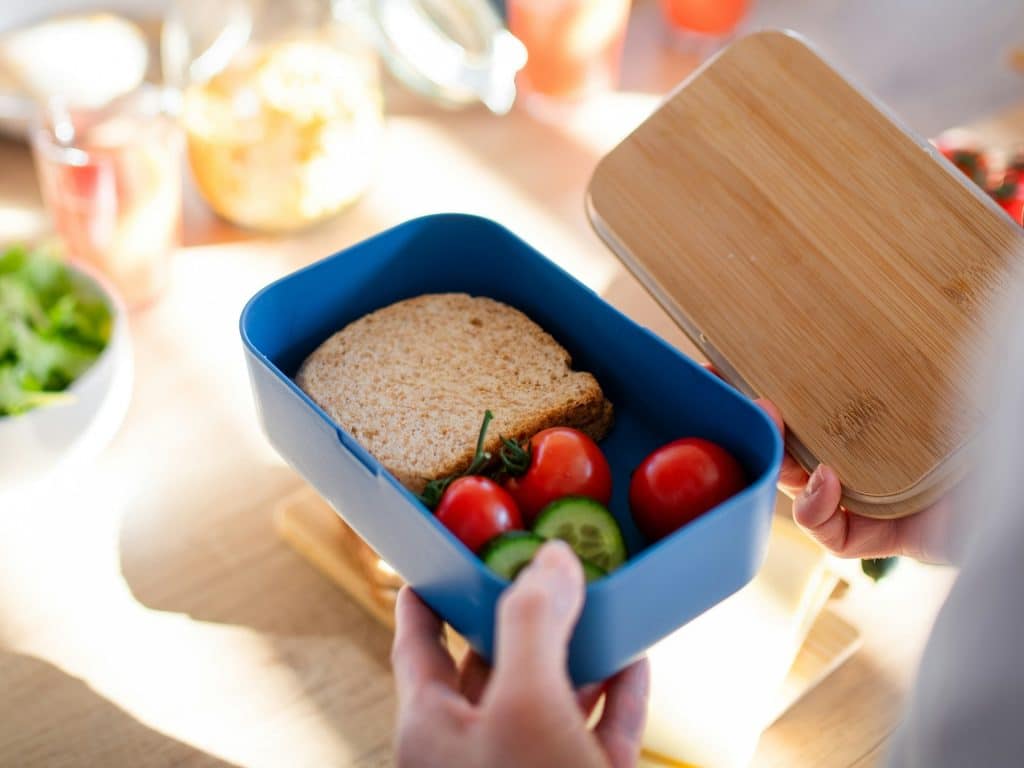
Putting some mid-morning food in schoolchildren’s backpacks gives us the opportunity to add healthy foods to their diet, but also for that recess lunch to be a bomb of calories and low-quality nutrients. Daniel Escobar Sáez, dietitian-nutritionist and member of the Academy’s pediatric nutrition specialization group (Ge-NutPedia) brings us some recommendations for healthy lunches for children so that there is more of the former and less of the latter.
Is mid-morning lunch essential at school?
For Escobar Sáez there is no unanimous answer for all children. “There are several factors that determine its relevance: age, school schedules, culture, special feeding needs, the child’s appetite, decision of the parents or legal guardians… From my point of view, it would be very interesting to hear their needs during recess. . and, based on this, prioritize one food or another.”
A first factor to take into account is the time of breakfast and what they usually eat for that first meal. If it’s too early or too frugal, it’s a good idea to add a snack for recess.
The dietitian-nutritionist reminds parents that for schoolchildren the most important thing for children is to play, run and let off steam. No matter how much parents, pediatricians and dieticians-nutritionists try to talk about healthy lunches for children, if the recess snack prevents them from playing, it is very likely to end up in the playground trash can.
Does something happen if they don’t eat lunch at school?
The specialist believes that there is no reason for this to be the case, although two possibilities must be distinguished:
- If we have a healthy child, it may only affect him/her becoming hungrier later. “Good planning and adaptation of breakfast (and the rest of the day’s intake) to your needs and meal times is crucial to avoid that feeling of hunger.”
- If, on the other hand, the child has some special needs, lunches must be controlled more carefully. “For example, if you are diabetic, it is possible that periods of fasting pose a risk of hypoglycemia, even more so if you do physical activity during recess.”
Does the mid-morning snack have to be light to be healthy?
The expert in children’s nutrition and dietetics is clear that each case is different and it is not a good idea to generalize.
- In a family that opts for a good breakfast, lunch can be the perfect time to measure out a piece of fruit, nuts, or some homemade preparation to the student’s taste.
- If breakfast is early or scarce, or if lunch is eaten later than usual, energy-dense and nutritionally interesting foods should be introduced at mid-morning lunch. An apple or a sandwich triangle would not be enough.

Keys to bringing a healthy lunch to recess
Daniel Escobar Sáez insists that parents should not lose sight of the fact that we are talking about children. And they are in a dynamic social environment, surrounded by friends who just want to play. In your opinion, these will be some of the keys to having a good, healthy and fun lunch:
- Make it easy for children to eat
- that they like
- That the portions are adapted, easy to prepare and consume
- Let us not waste their time. What they want is to play and they will prefer it to eating
Are traditional snacks a good option?
In previous generations it was very common to take a sandwich to school. “Nowadays it is possible that the idea of putting a sausage or a piece of milk chocolate between two breads is not enough. Or it turns out to be unappetizing.” For some children, the traditional snack may seem like an old idea and ends up in the trash.
If we choose to put a sandwich in our school backpack, “we must prioritize quality bread, with sourdough and whole wheat flour. As for the main ingredient, we should prioritize foods with high nutritional value and include a variety of options. Not only cocoa creams, cold cuts and sausages, we can also integrate vegetable pates (hummus, olivada), boiled or omelette eggs, cheese or some nut cream or peanut butter,” says Escobar Sáez.
The same thing happens with sandwiches, which the dietician-nutritionist advises to make with homemade bread and if it is whole wheat, the better.
Is it a good idea to rotate foods during the week?
Some schools encourage parents to vary what they put their children at recess. “In my point of view it is very convenient. One of the indicators of diet quality is the variety of foods. Offering some variability can contribute to the appropriate habits of the child and his family environment,” highlights the expert.
Among their favorite options are fruit “and other foods that may vary.”
What does fruit provide in mid-morning lunches?
In addition to minerals and vitamins, fruit is also a source of fiber and an interesting contribution of water.” Note that when we talk about fruit, we mean whole fruit. At most, in pieces or wedges. “Juices, nectars and other fruit-based drinks do not count as fruit in the strict sense. The fruit is chewed, not drunk.”
When incorporating fruit into the mid-morning lunch, he advises giving free rein to your imagination, surprising the little ones and making that lunch appetizing. “We can accompany it with nuts or cheese sticks. If they are small, prepare it already peeled and cut in a simple way so that they can eat it easily.”
It also supports different degrees of maturation, so that they can develop their tastes.
Tips for preparing lunch for school
- In many cases, preparation can be done the night before. To avoid the rush in the morning, we can leave a grilled chicken breast or a French omelet ready. We will keep them in the refrigerator and in the morning you just have to add the pan.
- If we prepare an apple or pear in already cut pieces, add a few drops of lemon juice to prevent oxidation. For food safety, it is best to cut it in the morning.
- Use containers for delicate fruit, such as bananas, berries or peaches. It will prevent them from getting crushed in the backpack.
- The zip bag is more manageable than a lunch box while they go down to the patio. We can use it for fruit or nuts.
- If you prepare sandwiches, you can have them prepared in advance in the freezer. We can make chicken breast sandwich, roast beef, canned tuna, fresh cheese…
- Encourage the child to participate in the process of preparing the lunch that is brought to recess.
- Avoid products with little nutritional value, such as chocolates, sweets, juices, pastries, cookies, bagged snacks and soft drinks.
- Avoid the regular consumption of processed meat (deli meats, sausages). Especially those with a higher fat content (fuet type).
- Do not include foods that may endanger food safety because they require specific conservation conditions, such as raw meat or fish (such as Steak Tartare or Sushi).
- Nor poorly curdled tortillas, even less so in spring-summer.
- Although nuts are a good idea, we must remember that they are contraindicated in children under 5 years of age due to the risk of choking. The same happens with creams made from these products.
- Lunch boxes with several compartments (bento box) allow you to carry several separate foods. Another interesting option is the use of bee wrapspackaging similar to film or aluminum foil, but more sustainable, made with beeswax.
What to wear for recess? Healthy lunch ideas for children.
- Fruits: banana, apple and tangerines are the simplest
- Milk or vegetable drinks with calcium in mini format (200-250 ml)
- Whole nuts for the older ones, or in creams for the little ones
- Vegetable spreads, such as hummus, olives, or other preparations such as “muhammara” or “baba ganoush”
- Dried or dehydrated fruit
- boiled egg
- Quality cheese in already cut format or “mini cheese”
- Homemade preparations, such as pancakes or oatmeal pancakes
- Nut balls and dehydrated fruit
- Snack/sandwich or wrap
- A lunch box with a little fruit, half a sandwich and handfuls of nuts

Daniel Escobar. Dietitian-nutritionist, member of the Spanish Academy of Nutrition and Dietetics, and collaborator of the Pediatric Nutrition Specialization Group. He specializes in maternal and child health and has extensive experience in nutrition of healthy and pathological children. Expert in plant-based food and nutrition and expert expert in clinical nutrition and dietetics. He is currently a collaborator in the Department of Public and Maternal and Child Health (Pediatrics) of the Complutense University of Madrid.







